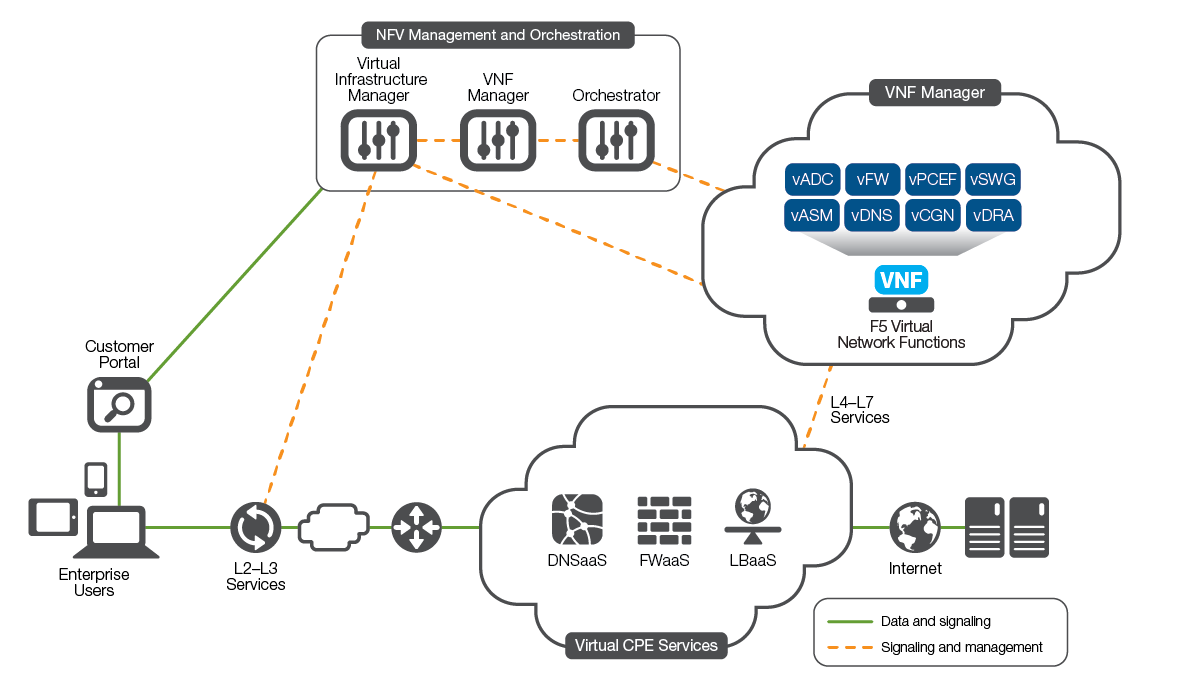虚拟客户端设备 (CPE)
挑战
向企业客户推出和部署新服务可能是一项重大挑战。 如果您的网络基础设施不灵活,则在每个客户位置的客户端设备 (CPE) 上物理安装和提供服务将会产生更高的资本支出 (CapEx) 和运营支出 (OpEx) 成本。 另外,当客户想要更改服务或增加容量时,您需要再次前往现场重新配置、更新或更换设备。
从客户的角度来看,任何变化都需要他们安排时间并等待服务开启,从而导致业务延迟和收入损失。 这也可能导致收入损失并降低客户满意度。
解决方案
虚拟客户端设备 (CPE) 可帮助您利用通用网络功能虚拟化 (NFV)基础设施来部署在云和网络中的服务。 借助提供多种核心网络功能的 NFV,虚拟 CPE 可让您采用云模型。 云模型使您能够共享公共资源池,并动态地将物理计算和网络资源分配给虚拟网络功能 (VNF)。 您可以部署 VNF 的单个实例,并在客户所在地将其作为本地服务提供。
企业客户可以启动或关闭网络功能实例,或者订购可以在单个位置或多个全球位置动态配置的新服务。 如果您建立了自助服务门户网站,客户可以自行订购和提供服务。 自助服务使您和企业能够从部署物理设备的复杂性、成本和较长的交付周期转变为以云为中心、自动化和敏捷的按需服务交付模式。
所有 F5 VNF 均可部署为服务,包括负载均衡即服务 (LBaaS)、防火墙即服务 (FWaaS) 和 DNS 即服务 (DNSaaS)。 通过利用虚拟 CPE,您将实现更快的网络部署、更快的识别、更高的服务货币化收入以及更高的投资回报率 (ROI)。
F5 可帮助您:
- 快速引入和部署新的网络服务。
- 减少在客户场所提供服务的资本支出 (CapEx) 和运营支出 (OpEx)。
- 实现端到端的服务自动化和编排。
- 动态地启动和关闭服务。
- 提高客户满意度和保留率。

产品和服务